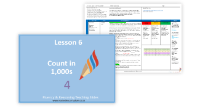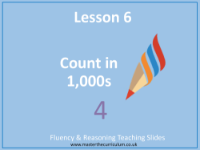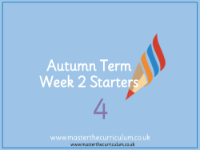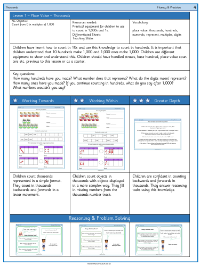Place value - Thousands - Planning
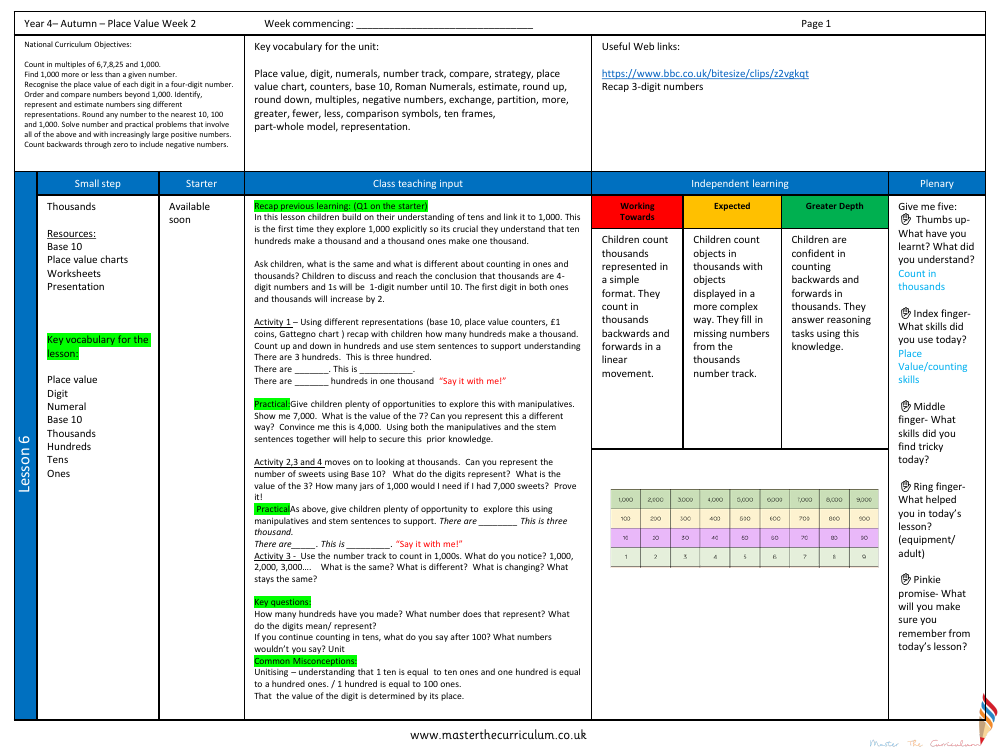
Maths Resource Description
The curriculum for Year 4 students during Autumn includes a focus on understanding place value, particularly the concept of thousands. The National Curriculum objectives aim to enhance students' abilities to count in multiples, find 1,000 more or less than a given number, and recognise the place value of each digit in a four-digit number. They are also expected to order and compare numbers beyond 1,000, identify and estimate numbers using different representations, round numbers to the nearest 10, 100, and 1,000, and solve practical problems involving large positive numbers, including counting backwards through zero to include negative numbers. The key vocabulary for this unit includes terms such as 'place value', 'digit', 'numeral', 'base 10', and 'thousands', which are crucial for understanding the numerical concepts being taught.
During the second week of the place value unit, the lesson plan introduces the concept of 'Thousands' by using resources such as base 10 blocks, place value charts, worksheets, and presentations. The lesson begins with a recap of understanding tens and how they relate to 1,000, emphasising that ten hundreds make a thousand and a thousand ones make one thousand. Through various activities, children explore different representations, such as base 10, place value counters, and Gattegno charts, to understand how many hundreds make a thousand. The activities are designed to be practical, giving children the opportunity to use manipulatives to represent and understand the value of thousands in different contexts. The lesson also includes key questions to guide understanding and address common misconceptions, such as the value of a digit being determined by its place. The lesson concludes with a reflective activity where children assess their learning and skills used, ensuring they retain the key concepts of counting in thousands and understanding place value.
